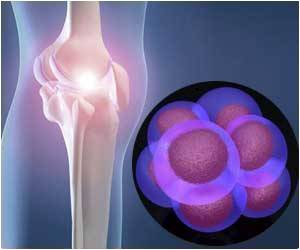Using nanoparticles to deliver osteoarthritis drugs to the knee joint could help increase the retention of the drug in the knee cavity, and reduce the frequency of injections patients must receive.

Lead researcher Michael Morgen, Ph.D., and his colleagues from Bend Research and Pfizer propose to address this challenge with injectable nanoparticles that help retain osteoarthritis drugs in the knee joint. Test results show that 70 percent of the drug nanoparticles remain in the knee cavity after one week. In contrast, for most current formulations, the drug disperses within one to two days.
In this new process, positively charged nanoparticles carrying a drug attach to the negatively charged, naturally occurring molecules in the knee to form a gel. This gel acts as a depot that slows drug escape from the knee cavity.
"Current delivery methods do not maintain the drug in the knee for very long, which limits the effectiveness of therapeutic agents," said Dr. Morgen. "We hope that this type of sustained release technology, when used with current or new osteoarthritis drugs, will allow patients to be effectively treated with drug injections every three months instead of once a week."
Source-Eurekalert















